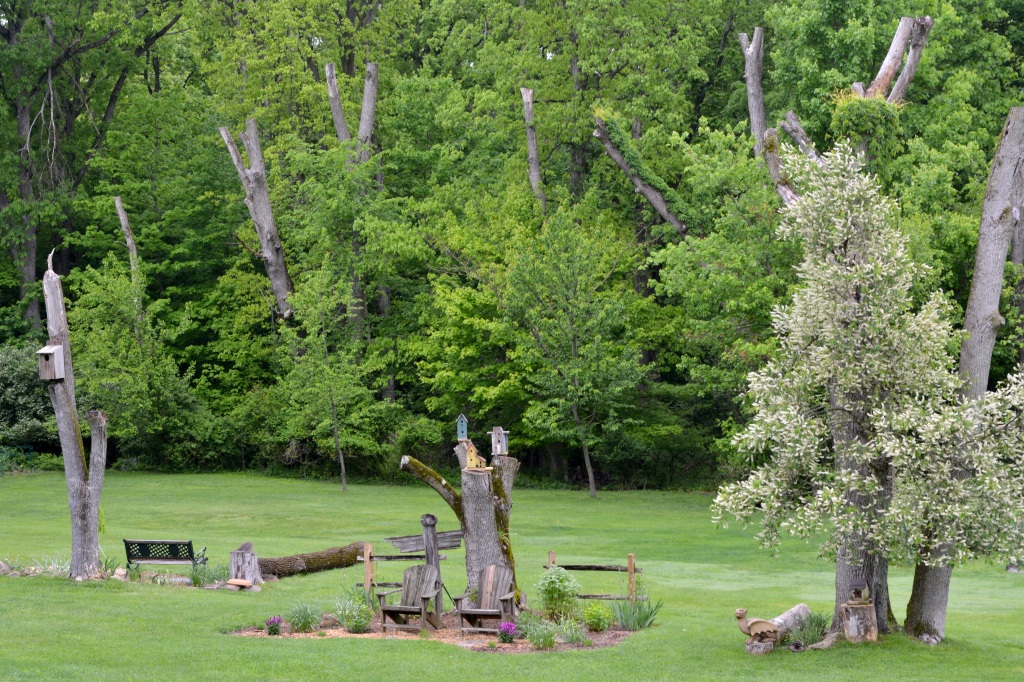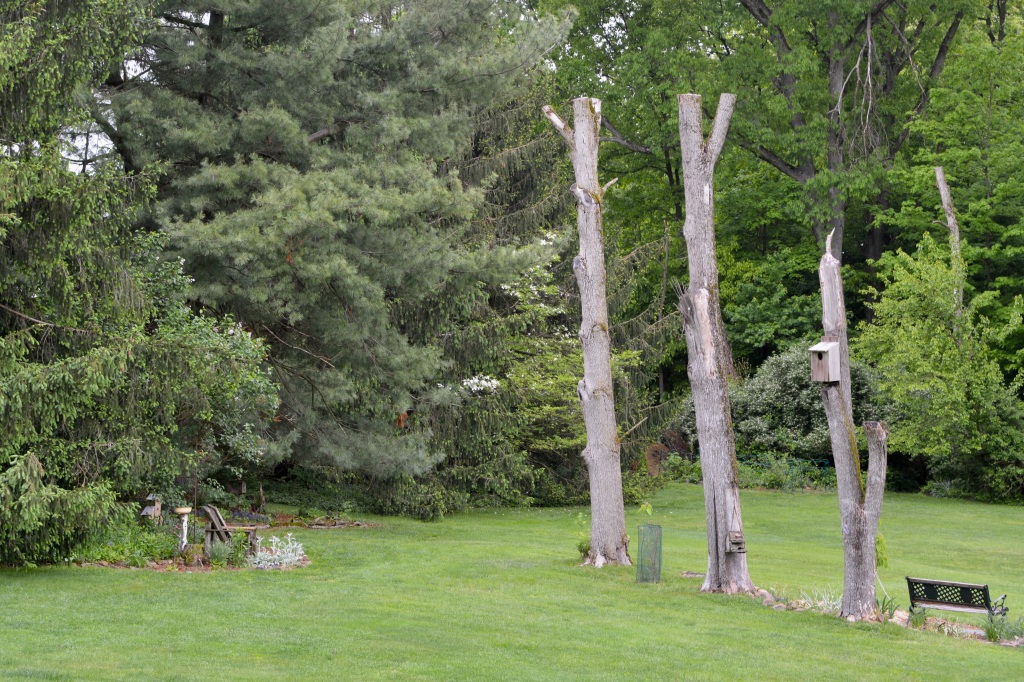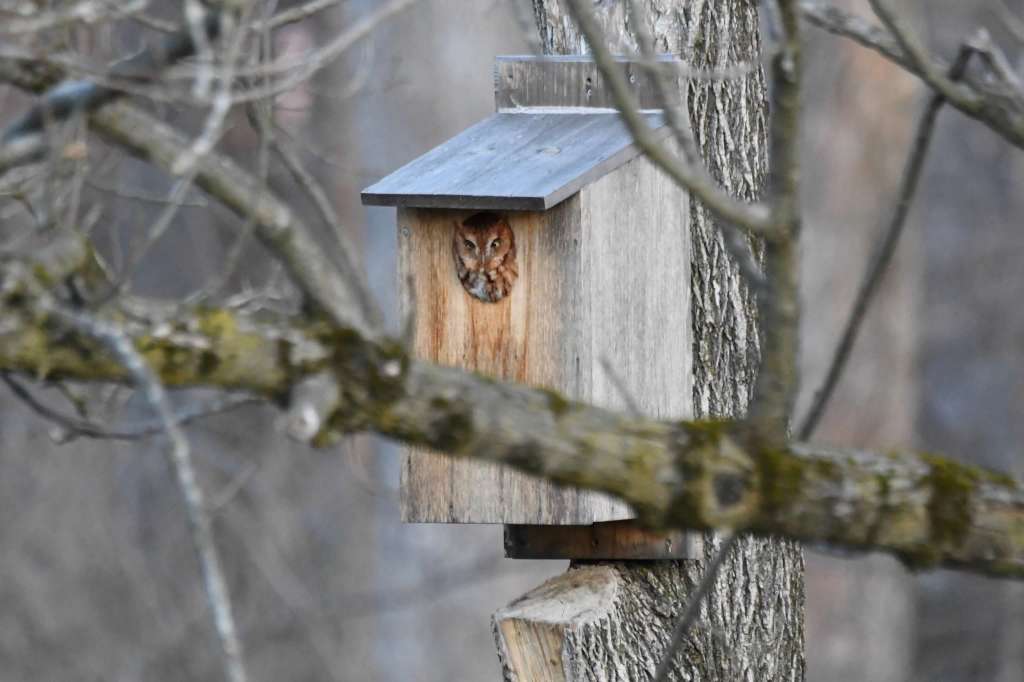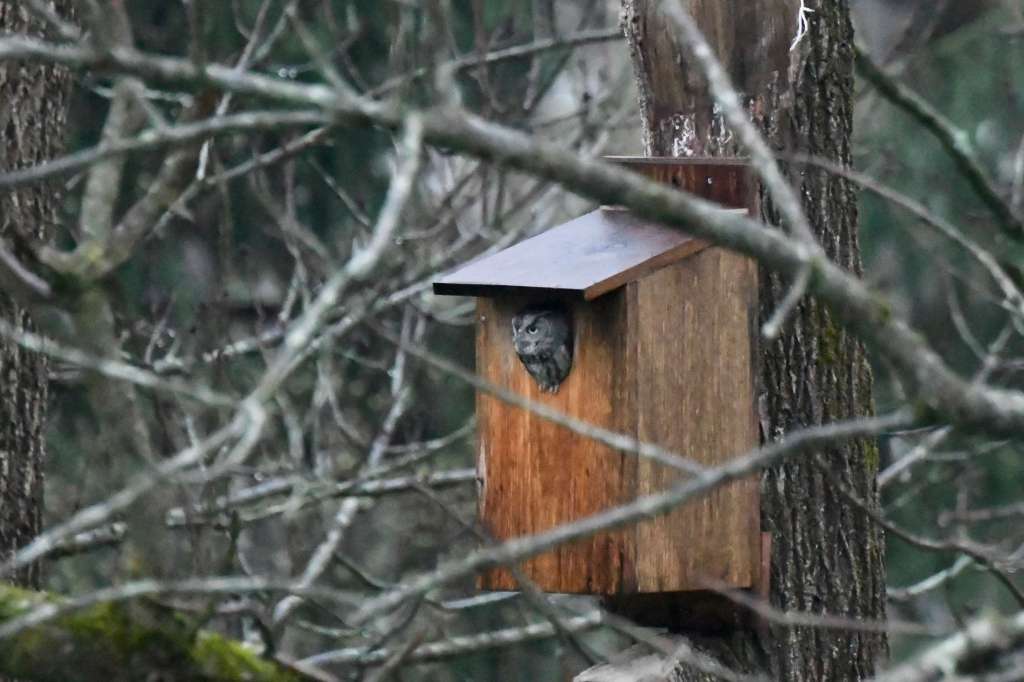The First Year 2020-21 Observing and Learning
I have been quiet here for far too long. There have been many things happening in my life; a new teaching position after mine was “dissolved”, building a new flower garden, retirement, lots of time to enjoy reading again, and breaking the fibula in my ankle. The broken ankle and surgery to repair it had me sidelined for weeks. I missed the entire short-eared owl season at my local grassland preserve. I was unmotivated and uninspired to write. I forgot to look out of my own window. The screech owls reminded to do that this spring. It is time to begin writing again and sharing my experiences with nature.

The story begins, years earlier than this writing, with the death of our Ash trees. The emerald ash borer got them all. We limbed up what we could reach, and then had them topped off by a local tree service. The backyard was getting to be a dangerous place with huge branches falling to the ground. We will take down what remains on our own in time. I wanted to incorporate some stumps into my new gardens. The old garden needed to be moved thanks to a dead ash falling on half of it.
I was gifted a box to attract nesting American Kestrels. The open field across the road attracts them, and I see them often. My first thought was to place it on a telephone pole at the end of my driveway. That idea was quickly abandoned since fledglings would need to cross the busy road to get to the field. The pole has also been hit and replaced 4 times. Not a suitable place to raise a family. We opted for one of the dead ash tree poles in the backyard.

I wasn’t sure we would attract kestrels, but hoped someone would use it. It was perfect, right? Clear view of the area. Spruce and Pine trees for cover. It’s a nice backyard. There is no use of pesticides, and it is filled with insects, rodents, rabbits, squirrels, and birds. My fingers were crossed in the fall of 2020 when we installed the box.
Looking out of my nature’s window one November morning, I can see something looking back at me from the box. I grabbed my camera and telephoto lens, and saw a gray face looking back at me! A screech owl had made itself comfortable in the box. Would it stay? Did it have a mate? Would they use it to nest and raise a family? So many questions. I just had to wait and see what would happen.

The days went by, the season changed from fall to winter, 2020 gave way to 2021. I continued to see Gray perched in the box, sunning itself in the early morning, or peeking out at dusk. Then one day in March, something changed. Instead of seeing Gray looking back at me, there was now a red screech owl in the box!

I have watched a local Bald Eagle nest via live cam since 2008. I now monitor that nest for the state of New Jersey’s Bald Eagle Project, part of the Endangered and Non-game Species Program. I have learned much from observing the eagle family as they prepare a nest, and raise their family each year. I know nothing of screech owls. I would need to watch and learn.
Research has taught me that Eastern Screech owls can be either a red morph or gray. The color does not necessarily indicate male or female. What little information I found about nesting, told me that the female is the one who incubates the eggs for 30 days. She does not hunt while on the nest, but relies on her mate to bring prey. Once the owlets are able to thermoregulate (hold their own body temperature) the female will leave the nest, and both adults feed their young. Nesting season begins in March, with owlets fledging by June. They do begin looking for a nest sight in February.
By April, I observed Gray back in the box. Did this mean the eggs hatched? How many young were in that box?

Unfortunately, year 1 of the box ended without ever seeing young. It was a treat to see the adults though, and to begin my education about these birds. Hopefully they will return, since mated pairs do tend to stay together and return to the same nesting site. I need more observation time with these small raptors in order to learn more about them. Watching through nature’s window can teach much about the wildlife living around you. Don’t forget to watch through yours!
Resources
Photos are all my own, using a 600mm telephoto lens. I remain at a distance that does not disturb the birds, allowing them to go about their normal behavior. Most images are cropped with minor adjustments to lighten or darken it.
